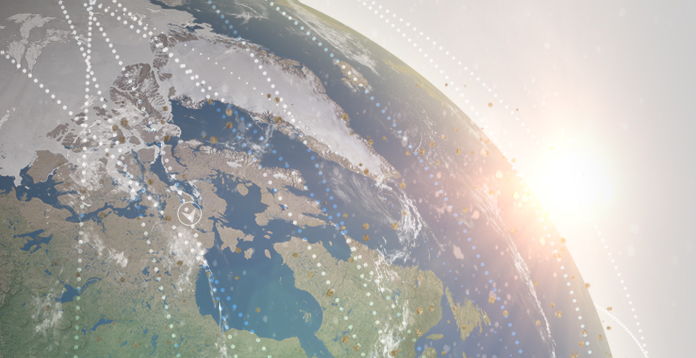US Military Enlists Amateurs to Track Space Junk


The U.S. military is launching a far-out neighborhood watch. But instead of warding off burglars, these amateur watchdogs are tracking orbital debris and possible satellite collisions in Earth orbit.
The sky-monitoring project, called SpaceView, is a Defense Advanced Research Projects Agency (DARPA) program that enrolls the talents of amateur astronomers to help protect American space assets from orbital trash.
The vision behind the DARPA SpaceView program is to provide more diverse data to the Space Surveillance Network, a U.S. Air Force program charged with cataloguing and observing space junk and debris to identify potential near-term collisions. NASA estimates more than 500,000 pieces of hazardous space debris orbit the Earth, threatening satellites that support peacekeeping and combat missions.
These dangerous objects include spent rocket stages, defunct satellites and fragments from other spacecraft that are the result of erosion, explosion and collision, according to a DARPA statement. A collision between one of these small pieces of debris and a satellite could release more than 20,000 times the energy of a head-on automobile collision at 65 mph (105 kph), the statement adds. [Worst Space Debris Events in History]
Space situational awareness
It’s a mess in orbit, and SpaceView officials are actively seeking information from individual amateur astronomers about their equipment, sites and observing habits to help keep a trained eye on this untidy state of affairs.
"There is an untold amount of potential in the amateur astronomy community that we hope to use to broaden our situational awareness in space," Air Force Lt. Col. Travis Blake, DARPA's SpaceView program manager, said.
Breaking space news, the latest updates on rocket launches, skywatching events and more!
"SpaceView should provide more diverse data from different geographic locations to ensure we have a robust understanding of the current and future state of our space assets," Blake said in a statement.
SpaceView is envisioned as a long-term partnership. This could potentially include time-sharing on telescopes, upgraded hardware at the astronomer’s site or financial compensation.
SpaceView hopes to engage amateur astronomers by purchasing remote access to an already in-use telescope or by providing a telescope to selected astronomers. When a telescope that is provided by the program is not in use by the SpaceView program, DARPA will provide its use for astronomy and astrophotography.
Growing problem of space junk
As a spiffy, specially produced, no-voice SpaceView video points out, everyone uses space, be it for television, phone, weather, navigational assistance or the Internet. There are 1,200 active satellites that provide these services.
But the video adds that more than 500,000 hazardous pieces of space debris threaten these satellites. A collision between a small piece of debris and a satellite releases the same energy as a hand grenade, the video notes.
Therefore, new debris is created with every collision. "The problem is growing," the video declares.
The United States has developed a Space Surveillance Network of large sites to help wrestle with the problem. But that network is capable of tracking only 30,000 of the 500,000 space objects. Increasing the capacity of this network will be expensive, the video notes, displaying big dollar signs.
Ability and passion of stargazers
SpaceView seeks to economically fill this gap by introducing a large network of amateur astronomers who already have the ability and passion to view space, the video continues. It notes that this network will be remotely controlled, acting as one large sensor to monitor known space debris as well as discover new threats
Telescopes used for astrophotography, asteroid hunting or simply high-quality astronomy are well suited for SpaceView’s needs.
The SpaceView video concludes by telling the amateur community that this new program provides the means to upgrade a skywatcher’s site to a state-of-the-art fully automated observatory — and in return observing time is shared to the benefit everyone.
According to the SpaceView website, in late 2013, the process will start to select the first dozen members of the project. At that time more member services will be activated.
SpaceView is seeking information from all interested amateur astronomers. Those keen on taking part can sign up on a mailing list and answer a few basic questions that will help SpaceView officials begin the process of gathering information critical to developing the network architecture concept.
For more information on DARPA's SpaceView project, visit: http://www.spaceviewnetwork.com/
Leonard David has been reporting on the space industry for more than five decades. He is a winner of last year's National Space Club Press Award and a past editor-in-chief of the National Space Society's Ad Astra and Space World magazines. He has written for SPACE.com since 1999.

Leonard David is an award-winning space journalist who has been reporting on space activities for more than 50 years. Currently writing as Space.com's Space Insider Columnist among his other projects, Leonard has authored numerous books on space exploration, Mars missions and more, with his latest being "Moon Rush: The New Space Race" published in 2019 by National Geographic. He also wrote "Mars: Our Future on the Red Planet" released in 2016 by National Geographic. Leonard has served as a correspondent for SpaceNews, Scientific American and Aerospace America for the AIAA. He has received many awards, including the first Ordway Award for Sustained Excellence in Spaceflight History in 2015 at the AAS Wernher von Braun Memorial Symposium. You can find out Leonard's latest project at his website and on Twitter.

